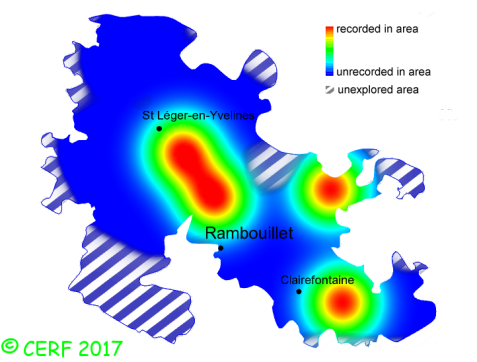|
Pluteus phlebophorus (Ditmar:Fr.) P. Kumm.
|
common name(s) : Wrinkled Shield, Veined Pluteus
New classification: Basidiomycota/Agaricomycotina/Agaricomycetes/Agaricomycetidae/Agaricales/Pluteaceae
Former classification: Basidiomycota/Homobasidiomycetes/Agaricomycetideae/Pluteales/Pluteaceae
synonyms: Pluteus chrysophaeus ss.Kühn.
(unconfirmed synonyms: Pluteus phlebophorous)
edibility : inedible
|
|
|
The cap is dark chestnut-brown, red-brown to yellow-brown, ochre-brown when drying.
its texture is fibrous.
The gills are .
The spore print is pink. This species is saprophytic.
The fruiting period takes place from July to November.
| Dimensions: | width of cap approximately 3.5 cm (between 1.5 and 6 cm) |
| | height of stem approximately 5 cm (between 2 and 9 cm) |
| | thickness of stem (at largest section) approximately 5 mm (between 2 and 10 mm) |
Chemical tests : none.
Pluteus phlebophorus is quite rare and localised in the forest of Rambouillet, and is occasional, more generally speaking
.
|  | | Above : distribution map of Pluteus phlebophorus in the forest of Rambouillet |
|
page updated on 14/01/18